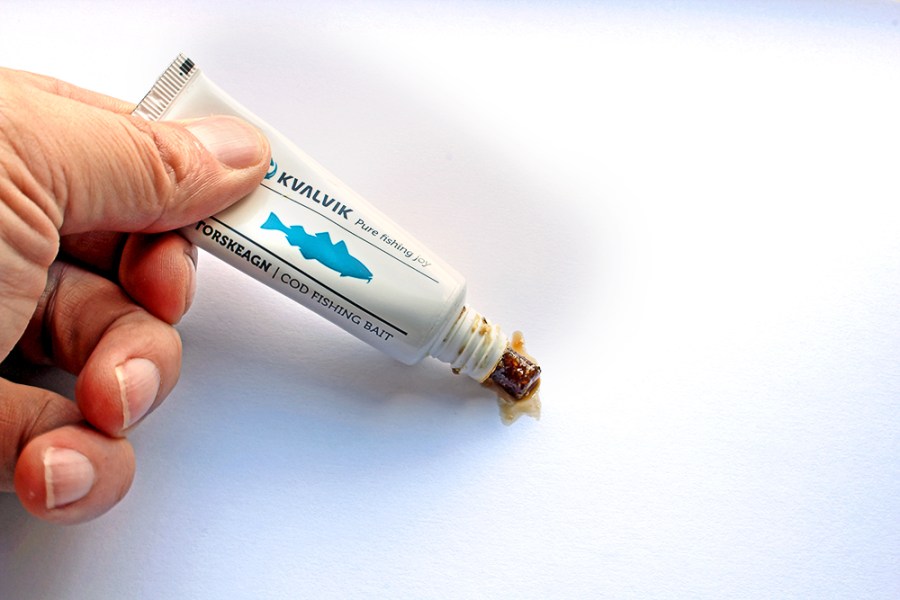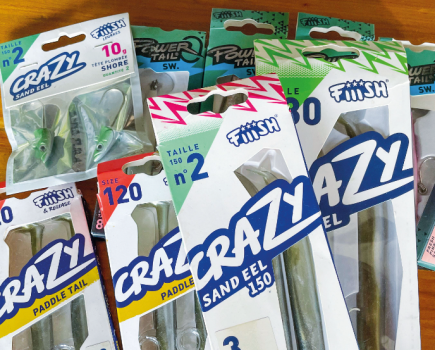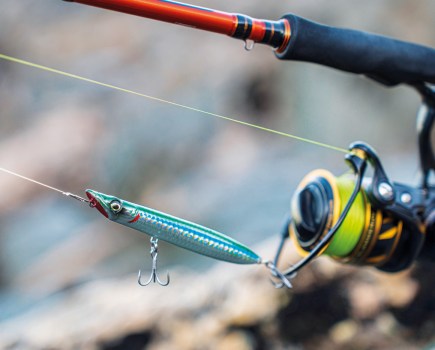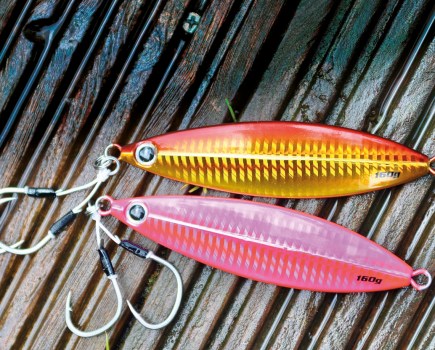DEVELOPED WITH HELP FROM THE NORWEGIAN GOVERNMENT, THIS ADDITIVE COULD IMPROVE YOUR COD FISHING
I’ve been around for a fair few years on the sea fishing scene, and during the past three decades I’ve been witness to a number of so-called ‘miracle’ bait additives, all of which have claimed to give you the edge and increase catch rates.
All of these wonder baits were claimed to have had hundreds of thousands of pounds invested in development.
I don’t doubt any of those claims, but let’s stop and think ‘where are they now?’ Many failed dismally in the UK. The main problem? I think the fact that the aforementioned baits and additives were developed in Japan or America goes a long way to explaining why they didn’t work here. So what’s different about Kvalvik?
SCEPTICAL TO START
Having seen so many come and go over the years, you can imagine how sceptical I was when I first heard about another wonder bait hitting the shelves. I read the promotional blurb and spoke to the guys importing Kvalvik to the UK and Ireland, Fish Dynamix. The more I investigated, the more convinced I was that this might be something different.
I think one of the main turning points for me with Kvalvik was when I discovered that it was the Norwegian government that was behind half of the funding for the project, and to the tune of almost two million pounds.
Kvalvik was born from an idea by Svein Kvalvik. He managed to secure 50 per cent funding from various Norwegian government research projects, because the idea of a natural artificial bait sat well with the country’s ‘Blue Economy’ programme. The remainder of the funding has come directly from shareholders.
It soon became clear that this was not a bait additive to catch anglers, but a real scientific experiment in order to alleviate the massive problem of using fish to catch fish – the colossal use of herring and squid in the Norwegian commercial longlining industry.
In essence, what the Norwegian government wanted to do was create an artificial bait from a natural source already within the fish processing industry, to reduce the pressure on herring stocks being caught for bait.
SERIOUS SCIENCE
Developed by Polybait in co-operation with Nofima (the UK equivalent of Defra), and SINTEF (the largest independent research organisation in Scandinavia), Kvalvik Bait is manufactured from residual raw materials from the fish processing industry, and consists of attractants in the form of amino acids and a biodegradable binding agent.
If you log on to YouTube and watch some of the videos on the Kvalvik Bait channel, you’ll see why Kvalvik grabbed my attention. There’s certainly something in it as far as laboratory testing is concerned, but, more importantly, large-scale trials of longline fishing with Kvalvik has proven the bait to be as effective as when using real fish bait.
Research has shown that 60g of this product is as effective as 1kg of herring. This means that fishing with the new bait will be much more sustainable, plus it does not pollute the environment and is also biodegradable.
HOW TO USE IT
The company has used behavioural studies to identify three substances that attract fish species from several hundred metres away.
If you’re fishing for cod, you use the bait designed to attract cod, but there is also a Kvalvik designed for halibut, trout, salmon
or Arctic char.
When you are fishing for cod with Kvalvik Bait, you apply the cream directly on your preferred lure or bait. I haven’t tried the stuff with a lure yet, but I can see why it would add extra attraction – it absolutely stinks!
When I used it this winter, I rubbed it into my squid baits, and left them to ‘marinade’ for 10 or 20 minutes in the box. One word of warning, this stuff sticks to you like glue.
Tests with Kvalvik were carried out with a biopolymer gel-like material being soaked in the bait, and then put on longline hooks. I have since heard there are experiments with a tougher material that has been impregnated with Kvalvik, which will be interesting to see.
MY FINDINGS
First of all, I’ll put my hands up and say that I haven’t given this bait as thorough a testing as I would like to before writing about it, but the results I have had so far have given me more than enough confidence to run with it.
I’m looking forward to playing with Kvalvik in a situation when there are fish all over the place. Yet the fact that I have been testing this stuff when the fishing has been tough, and have caught, says a lot about the product.
My first attempt at testing was in the Thames Estuary. As it turned out that day we managed to put eight fish in the boat between six anglers, and I caught two of them, both on Kvalvik–soaked squid baits. It wasn’t the cod-fest that we’d hoped for, but there was only one other guy who caught two cod that day, and that was the skipper. Hardly scientific, I hear you say. Well, no, it wasn’t, but the fact remains that I caught two cod while using Kvalvik – it certainly didn’t put off the fish.
The next opportunity I had was during the Cardiff Cod Comp in the Bristol Channel. Again, the fishing was really hard, and if it had been the conger match I’d have walked it. Kvalvik certainly attracted the eels for me, along with the only cod caught on our boat that day – to one of my squid baits. Again, it was hardly scientific, but the fact still remains that I caught the only cod.
I took Kvalvik out on another trip in the Thames Estuary, but this time the fishing was even harder, with just five codling. This time I managed a brace myself, again to squid-soaked in Kvalvik. I’m by no means finished with testing this bait, but I’m sharing my findings so far because I’m certain there is more to come. My next mission is to try the bait on its own by either using cotton wool or some other material soaked in the stuff.
The future looks interesting for Kvalvik.







